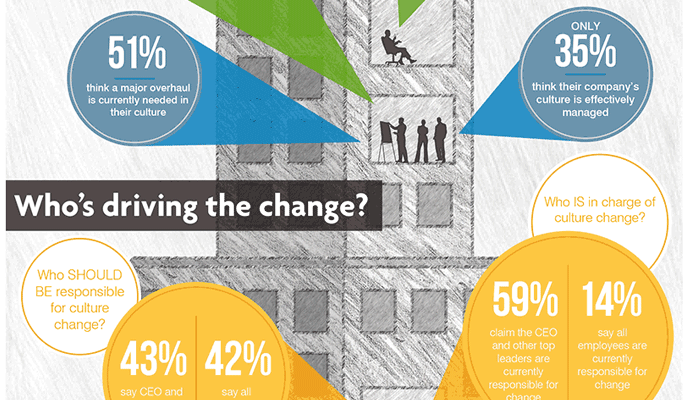Peer Coaching as a Tool for Culture Change
Sometimes the best approaches to revamp an organization’s culture come from the employee level, rather than edicts issued by senior executives.
How does an incoming CEO make systemic changes in an established company when its employees have become demoralized or fearful? I’m thinking of a storied manufacturing firm that only recently emerged from a decade of turmoil and drift. An independent analysis concluded that an overly ambitious expansion effort in the mid-2000s had resulted in the company launching projects it lacked the resources to deliver. Managers and engineers, reluctant to bring bad news to bosses who had advocated for expansion, let troubled projects fester until problems became acute.
The firm’s new CEO is promising to address the resulting dysfunction by creating an “ownership culture” in which employees are rewarded for warning about problems early and held responsible for letting them get out of control. He believes this approach will “empower” people throughout the firm to hold themselves accountable for their actions. In pursuit of greater “transparency,” he’s signed a deal for enterprise software that will enable his executive team to track the progress of the company’s myriad contracts around the world.
As you can tell from the ironic quotes, I don’t find the CEO’s fondness for buzzwords reassuring. Rather than articulating a plan or method for instilling the kind of culture change he professes to desire, he blends the aspirational with the punitive and dresses it in business jargon.
Perhaps this is not surprising––even the most successful companies struggle when confronted with the need to change behaviors among thousands of employees, especially behaviors that are rooted in legacy conditions. And while software programs offer an excellent means of monitoring processes and providing status updates, they are of little use in addressing the fear and demoralization that have been dragging down this company’s performance.
Even the most successful companies struggle when confronted with the need to change behaviors.
At heart, these are cultural problems. Given the complex nature of global organizations today, as well as their growing reliance on full-hearted engagement of human talent, culture is increasingly recognized as the nub of challenges resistant to logistical fixes.
Yet culture change is difficult, in part because to be effective it must spread throughout the organization; strenuous efforts to reach out to top teams or focus on high performers can only go so far. Continued skepticism among groups that feel excluded or disengaged can undermine the most beautifully designed change effort –– particularly when fear plays a role in the equation.
So what does it take to support far-reaching behavioral shifts of the kind our CEO needs to put into place? There are many routes, but I would like to suggest one of the least expensive and most underutilized tools for spreading needed change throughout an organization: the simple but effective practice of peer coaching.
Until a decade or so ago, peer coaching was most widely used by educators as a means of helping less experienced teachers get up to scratch. More recently, a few companies have been adapting the method as a way to extend some of the benefits of coaching to large numbers of employees in a cost-efficient way. In essence, peer coaching works by giving people a forum, a process, and a means of support for addressing their own development challenges, as well as holding themselves accountable for needed change. Rather than working with a professional, each member of a peer coaching pair acts as a sounding board and resource for the other.
Peer partners typically work together for a specific period. Assignments are made based partly on a self-assessment of each participant’s strengths and weaknesses, and partly on the project leader’s view of specific things that participants may need to address.
For example, a financial services company was seeking to break down divisions that existed in the aftermath of merger. The senior team laid out a goal to align the two entities, but the leader of a large, newly constituted client services team saw weak or even nonexistent relationships as jeopardizing the cohesion needed to achieve that. The problem was exacerbated by the fact that employees were still working in different cities where the merged companies had been based.
Rather than go to the expense of co-locating, the leader decided to use peer coaching to get people not only talking but directly involved in each other’s success. Individuals from the merged companies were paired and taught the basics at a full-day session. Pairs interviewed one another to get a sense of one specific thing each could do to help strengthen their internal connections and extend their networks more broadly.
Peers were then asked to create lists of five to 10 specific actions that would demonstrate measurable progress in meeting their goals. They were urged to focus on concrete steps, rather than the generic or aspirational: for example, “I will follow up with two people I meet at this session,” or “I will make a point of having lunch with X when I visit her site.”
Peer pairs then committed to a brief phone exchange on a regular basis. Each kept the other’s list available so they could pose questions during these sessions, asking for examples that demonstrated one another’s progress. At the end of each month, pairs evaluated their progress and updated their lists of questions. When the group reconvened after 90 days, participants reported not only a significant extension of internal networks but also measurable improvements in challenges such as handling stress and effective time management. Having a peer hold them accountable for actions they themselves had committed to proved to be a real boon in terms of improving their performance.
The CEO of the manufacturing firm cited above could learn by studying this example. Although he is clear about the need for people to hold themselves accountable for alerting leaders to troubled projects, he is proposing to achieve this by “empowering” them with the stick of a punishment or the carrot of a reward.
In other words, he only plans to address extrinsic motivation, which comes from the outside. But people are more likely to make sustainable shifts in their behavior when their capacity for intrinsic motivation is addressed. This is the way of culture change, as opposed to process improvement: It recognizes that an organization can’t change unless its people do. Peer coaching can be helpful because it engages people in their own growth and development.





